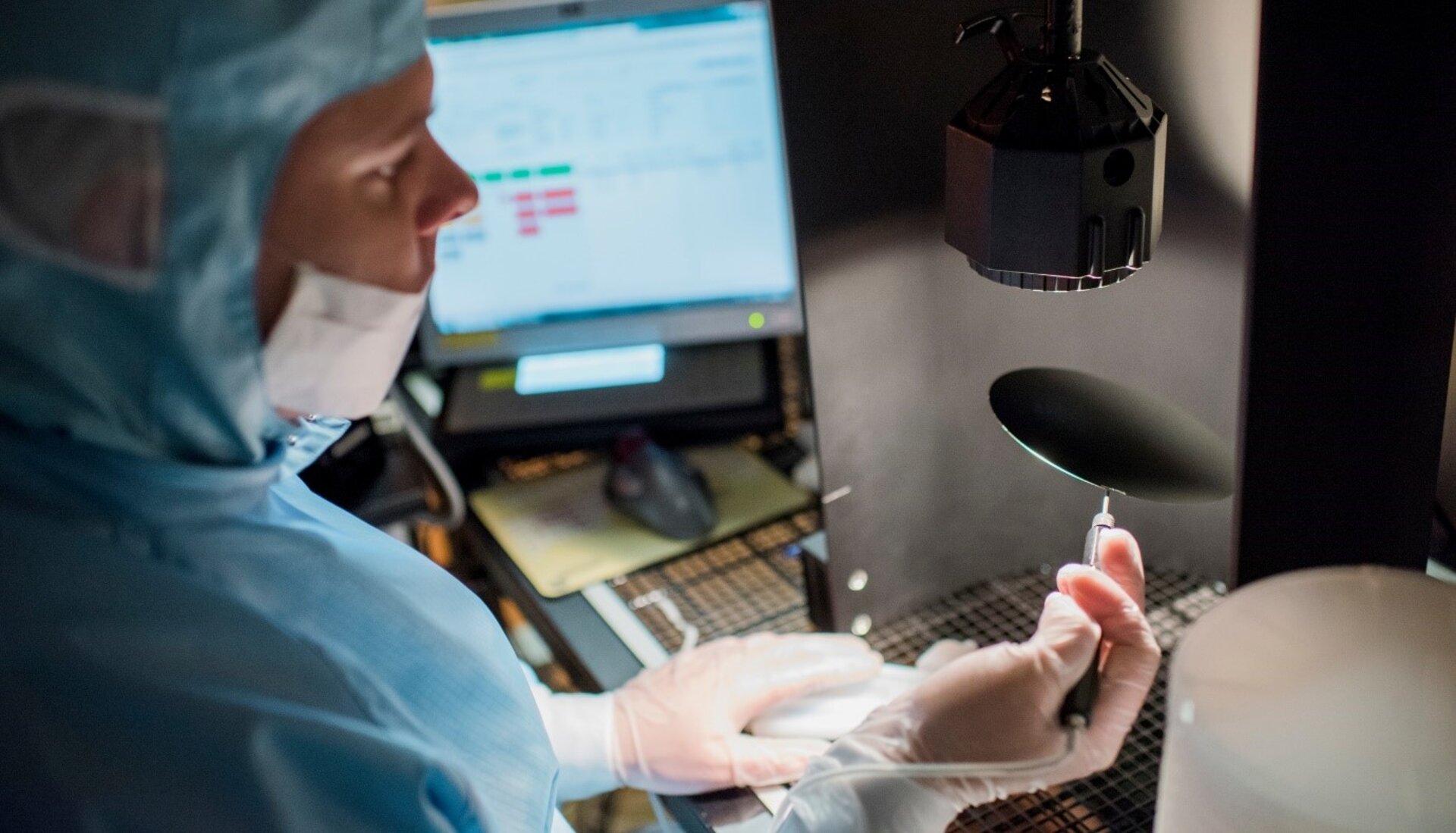Reduce, Reuse, Recycle: Growing solar cells on nothing
Solar cells are a vital part of any mission; they are needed for powering satellites and the vast array of equipment and instruments on board.
For handling and process reasons, standard triple-junction solar cells are grown on a foundation or substrate of 150 micrometres (0.15 mm) of germanium (Ge) – a rare and expensive material that amounts to around 30% of the cost of each individual cell.
To generate power a foundation this thick is unnecessary and so an activity under the General Support Technology Programme (GSTP) has been working on a technique to reduce, reuse and recycle this vital material.
The activity, performed under the GSTP de-risk initiative, tested a method where the surface of the Ge substrate is treated so that a cavity is introduced just below it. Once a solar cell is grown on the Ge surface, this 0.001 mm thick gap, or cavity, allows everything above it to be removed, leaving just a very thin layer of germanium still attached to the cell –around 10 micrometres thick instead of the previous 150.
This huge saving of weight and volume of a rare material will result in major cost savings, especially when multiplied across the roughly 10,000 solar cells needed for each satellite mission.
Once the cell and surface layer are removed, most of the Ge growth substrate remains untouched and can then be repurposed and recycled for further cells. It can be reused multiple times but will eventually need to be replaced as each time the cavity results in 1-2 micrometers of Ge loss and a minimum thickness is required to grow the solar cells.
This cavity method is already being used for solar cells grown on a silicon foundation but silicon substrates have not been used in solar cells for space for over 20 years. Germanium has been the preferred substrate in that time because its perfect lattice structure grows solar cells with the best performance.
The activity demonstrated that the principle works, now further activities will modify and improve the process, since the treatment to close the surface of the germanium above the cavity results in a less-than-ideal surface. These subsequent activities will investigate how to improve the solar cells performance and address any issues the treated surface causes.
G617-241TAbt closed in December 2019.


